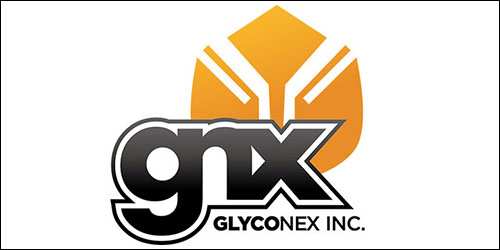19 Aug Precision Targeting Beyond Proteins: Inside GlycoNex’s Glycan-Directed ADC Platform
GlycoNex is advancing a new generation of glycan-directed antibody-drug conjugates (ADCs) aimed at improving precision in solid tumor treatment. While many ADCs target well-known protein markers, GlycoNex focuses on tumor-associated glycans, carbohydrate structures overexpressed on cancer cells but largely absent in healthy tissue. Its lead program, GNX1021, targets the branched Lewis B/Y glycan, a marker broadly expressed in gastric and other epithelial tumors. The company believes this approach can expand treatment options for patients ineligible for HER2 or CLDN18-targeted therapies.
Bench2Bedside:
Dr. Yang, what sets GlycoNex’s approach to ADCs apart from others in oncology?
Dr. Mei-Chun Yang:
Many ADCs target proteins, but those targets often vary between patients or even within a tumor. Glycans like Lewis B/Y offer more consistent expression across tumor cells. GNX1021 is designed to recognize these carbohydrate markers with high specificity, enabling potent tumor cell killing while sparing healthy tissue. It’s a different targeting paradigm, and one we think has enormous potential to broaden ADC applications in solid tumors.
Bench2Bedside:
Tell us more about GNX1021 in cancer treatment.
Dr. Mei-Chun Yang:
GNX1021 is a glycan-directed ADC that targets branched Lewis B/Y, a tumor-associated glycan highly expressed in gastric and other epithelial tumors. The branched structure makes it more cancer-selective than unbranched forms seen in healthy tissue, helping improve both targeting and safety. GNX1021 has shown potent anti-tumor activity in preclinical models, including HER2-ADC resistant tumors and large tumor burden settings. Importantly, it may address an underserved patient population, those who don’t qualify for HER2 or CLDN18-based therapies. We’re also seeing early signals of broader utility across other solid tumor types.
Bench2Bedside:
ADCs must balance efficacy with safety. How does GNX1021 perform on that front?
Dr. Mei-Chun Yang:
In a pilot toxicology study in non-human primates, GNX1021 showed a safety profile comparable to currently approved ADCs. This is critical, especially for solid tumors, where patients may already be heavily pretreated. Our goal is to maintain strong tumor-killing potency without sacrificing tolerability.
Bench2Bedside:
Where does the program currently stand in development?
Dr. Mei-Chun Yang:
We’re completing IND-enabling studies now and expect to initiate GLP toxicology by the end of this year. We aim to submit clinical trial applications in both Taiwan and Japan in the first quarter of 2026. If all goes well, first-in-human trials could begin by mid-year.
Bench2Bedside:
Tell us about your biosimilar program and SPD8.
Dr. Mei-Chun Yang: SPD8 is our lead denosumab biosimilar candidate currently in a Japan Phase 3 clinical trial. Denosumab is widely used to treat osteoporosis and prevent skeletal-related events in cancer patients. With SPD8, our goal is to match the reference product in terms of structure, function, and efficacy, while also leveraging our in-house manufacturing capabilities to streamline production. This program demonstrates our broader expertise in biologics development and global regulatory strategy.
Bench2Bedside:
How is GlycoNex thinking about partnerships?
Dr. Mei-Chun Yang:
We’re actively seeking early-stage licensing and strategic alliances for GNX1021. The ADC field is moving quickly, and strong partners can help us accelerate development while managing risk. Recent deals in the space show that there’s real appetite for differentiated ADC platforms, and we believe glycan targeting represents a compelling next frontier.

CEO: Dr. Mei-Chun Yang
Headquarters: New Taipei City, Taiwan. 4168
Lead Products:
- GNX1021 – Glycan-directed antibody-drug conjugate for solid tumors
- SPD8 – Denosumab biosimilar
Stage of Development:
- GNX1021: Completed pilot toxicology study in non-human primates
- SPD8: Phase 3 clinical trial ongoing
Pipeline Details and Upcoming Milestones:
- Submit IND for GNX1021 (1Q 2026)
- Launch first-in-human Phase 1 trial for GNX1021 (2Q 2026)
- Advance SPD8 toward regulatory submission
- Explore early licensing and strategic partnership opportunities for GNX1021



